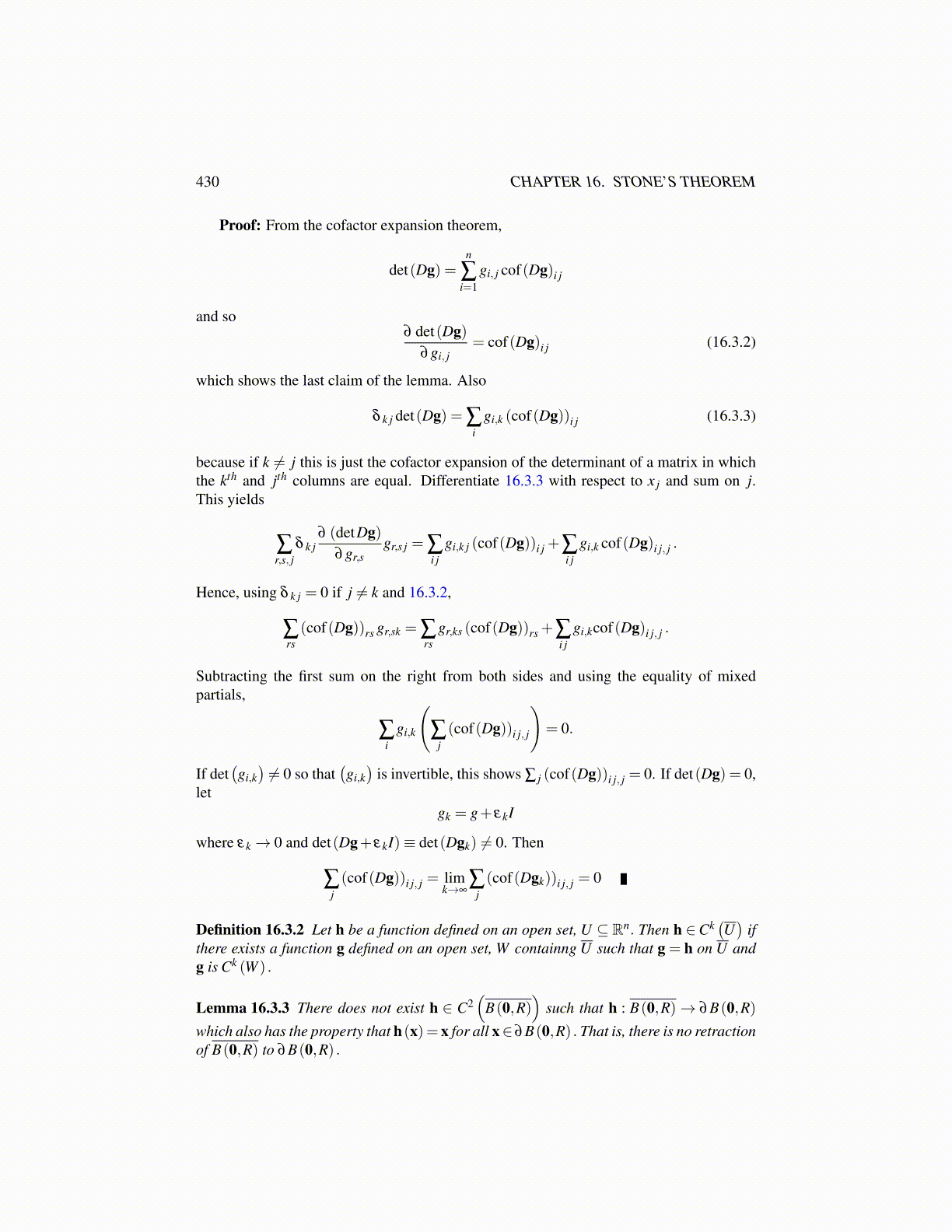
430 CHAPTER 16. STONE’S THEOREM
Proof: From the cofactor expansion theorem,
det(Dg) =n
∑i=1
gi, j cof(Dg)i j
and so∂ det(Dg)
∂gi, j= cof(Dg)i j (16.3.2)
which shows the last claim of the lemma. Also
δ k j det(Dg) = ∑i
gi,k (cof(Dg))i j (16.3.3)
because if k ̸= j this is just the cofactor expansion of the determinant of a matrix in whichthe kth and jth columns are equal. Differentiate 16.3.3 with respect to x j and sum on j.This yields
∑r,s, j
δ k j∂ (detDg)
∂gr,sgr,s j = ∑
i jgi,k j (cof(Dg))i j +∑
i jgi,k cof(Dg)i j, j .
Hence, using δ k j = 0 if j ̸= k and 16.3.2,
∑rs(cof(Dg))rs gr,sk = ∑
rsgr,ks (cof(Dg))rs +∑
i jgi,kcof(Dg)i j, j .
Subtracting the first sum on the right from both sides and using the equality of mixedpartials,
∑i
gi,k
(∑
j(cof(Dg))i j, j
)= 0.
If det(gi,k)̸= 0 so that
(gi,k)
is invertible, this shows ∑ j (cof(Dg))i j, j = 0. If det(Dg) = 0,let
gk = g+ εkI
where εk→ 0 and det(Dg+ εkI)≡ det(Dgk) ̸= 0. Then
∑j(cof(Dg))i j, j = lim
k→∞∑
j(cof(Dgk))i j, j = 0
Definition 16.3.2 Let h be a function defined on an open set, U ⊆ Rn. Then h ∈Ck(U)
ifthere exists a function g defined on an open set, W containng U such that g = h on U andg is Ck (W ) .
Lemma 16.3.3 There does not exist h ∈ C2(
B(0,R))
such that h : B(0,R)→ ∂B(0,R)which also has the property that h(x)= x for all x∈ ∂B(0,R) . That is, there is no retractionof B(0,R) to ∂B(0,R) .